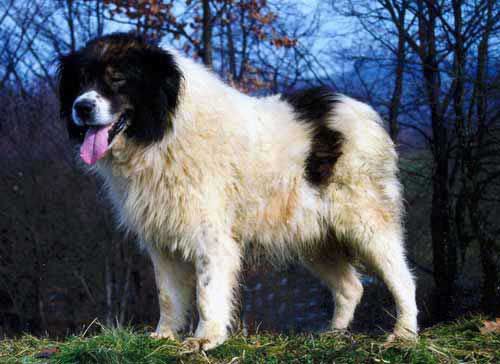Tornjak

The Tornjak does its nature’s job well: herding herds. If there is no herd, it will protect children, other animals, and even the city. At first glance, they seem very relaxed and lazy, but they are not. They are always ready to rush to defend their territory from strangers.
Table of Contents
Breed Information
| Another Name | Bosnian and Herzegovinian Shepherd Dog (FCI) |
| Origin | Bosnia and Herzegovina, Croatia |
| Height | Males 67-73 cm Females 62-68 cm |
| Weight | Males 50-60 kg Females 35-45 kg |
| Fur | Long, thick with a dense undercoat |
| Color | Two- or three-color with a predominance of white |
| Lifespan | 9-11 years |
| FCI Classification | Pinscher and Schnauzer – Molossoid and Swiss Mountain and Cattledogs |
| Group | Watchdogs |
| Price | $260-530 |
Breed Photos
Origin History
The origin of the dog is very ancient. Originally, the Torniak protected herds from wild animals. The first mention of this breed was in the ninth century in chronicles.
There are two theories about the origin of this breed. Some scientists believe that they are related to the Tibetan Mastiff; others think that the Tornjak was bred from Mesopotamian dogs.
In the course of evolution, the appearance of the dog hardly changed. Only in the 70s of the last century began detailed research and breeding of purebred representatives of the breed. This work was successful, and in 2007 the breed was recognized by the FCI (Fédération Cynologique Internationale).
Appearance
Dogs are mighty and large; the body is a little square, harmonious. The dogs have a very long coat and a thick undercoat. The hair is longer on the top of the head. It can be a little wavy.
Males can be about 67-73 cm and weigh 50-60 kg, bitches are usually 62-68 cm tall and weigh 35-45 kg. A thick mane is formed on the neck. Chest and back are broad. The most popular color of the dog is white with a variety of spots of all shades. On the paws, the hair is short, which forms “pants”. The muzzle of the Tornjak is elongated.
Character
The Tornjak does its nature’s job well: herding herds. If there is no herd, it will protect children, other animals, and even the city.
At first glance, they seem very relaxed and lazy, but they are not. They are always ready to rush to defend their territory from strangers.
They are unobtrusive and will never force their owner to play or spend time with them. They have a good memory and are great at remembering family friends, and will never bark at people they know. Thornyacs don’t like to spend time alone; they like to be where their family, children, and activities are. They will easily keep company when jogging or biking.
They do not tend to bark much and often raise their voice only for the need. Very patient with children. Good to animals with which they grew up together in the same area.
Care
The best place to live is a country house with an area free for running. An aviary can be arranged. Do not keep a Tornjak on a leash – it may cause unnecessary aggression.
Long hair requires special care – several times a week, you need to brush it. It is not necessary to bathe often; several times a year is enough. But it is essential to monitor the state of cleanliness in the aviary regularly.
Ears can often be prone to bacteria, so once a week; they should be cleaned and checked. Claws do not have time to file themselves; it is recommended to trim them once a week with a particular machine.
Training
Socialization is vital from an early age. Dogs are easy to train because they like to do their job. There should be no problems with training. Training should be done from 3 months of age when puppies already do easy commands.
The easiest way to train a dog is when he trusts you and sees you as a leader. Tornjak is an excellent protector, fearless, always ready to protect his family. They don’t need to take any additional courses in defense training. It’s a natural gift for them.
Tornjak can easily play with other dogs, compete with them in various games. With him, you can not worry on walks and do not even use a leash. The dog has a good memory, which is a big plus in training.
Common Diseases
Tornjak is in good health and rarely gets sick. The problem for him, as for all large dogs, can be hip dysplasia. It will help reduce the disease’s risk if the puppy is not traumatized as a child. It is also not recommended to give a lot of protein; it can harm the coat.
Nutrition
The diet should be balanced. It is worth consulting a doctor to find the best way to feed your pet. Ensure your pet has access to clean water at all times.
 Billy
Billy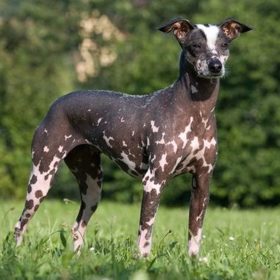 Peruvian Hairless Dog
Peruvian Hairless Dog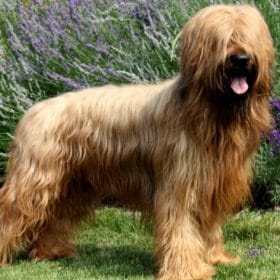 Briard
Briard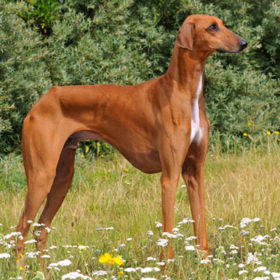 Azawakh
Azawakh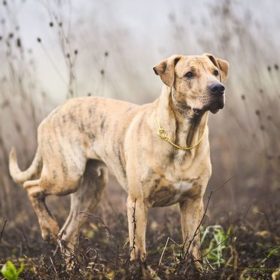 Cimarrón Uruguayo
Cimarrón Uruguayo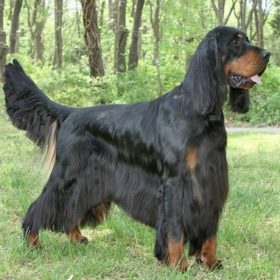 Gordon Setter
Gordon Setter